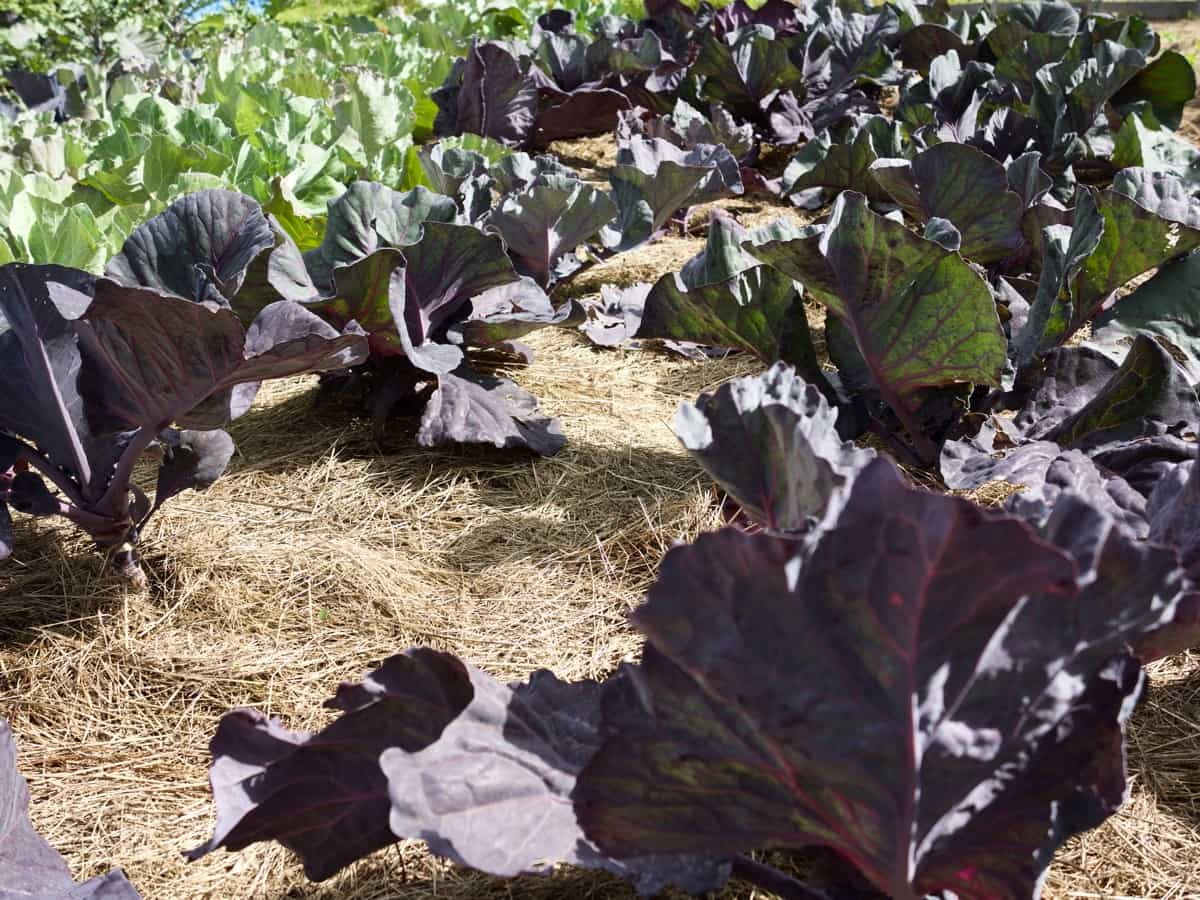In the vibrant world of agriculture, market gardening stands out as a sustainable and profitable model. It encompasses the small-scale production of fruits, vegetables, flowers, and herbs, catering to a direct market. Market gardening examples range from family-run plots in rural areas to urban horticultural operations. The beauty of this form of gardening is its ability to operate on both an intensive and extensive scale.

While commercially viable, market gardening is not entirely divorced from subsistence farming. Choosing market gardening crops, considering the local market gardening climate, and carefully planning to contribute to success in this field. Profitability often lies in choosing the most profitable market garden crops and effectively strategizing the business plan.
Organic Vegetable Gardening Tips
Market gardening for vegetables is rooted in understanding soil health, crop rotation, and organic pest control. Organic methods eschew chemical fertilizers and pesticides, favoring natural alternatives. Healthy soil forms the foundation for a robust vegetable garden. Composting organic waste produces nutrient-rich soil amendments.
Crop rotation prevents soil depletion and disrupts pest and disease cycles. For instance, rotating legumes can fix nitrogen in the soil, benefiting subsequent crops. Lastly, organic pest control encompasses strategies from companion planting to traps and barriers, fostering a balanced ecosystem.
Best Vegetables to Grow in Small Spaces
The most successful vegetable gardens are those that capitalize on the space available. For smaller spaces, opting for high-yielding, space-saving crops is wise. Given their vertical growth habit, root vegetables such as carrots, beets, and radishes are great options. Leafy greens such as lettuce and spinach can be picked early as “cut and come again” plants, giving a constant harvest. Vertical growing structures can help climbers like cucumbers, peas, and beans flourish in small spaces, maximizing ground and vertical space.
Urban Market Gardening Techniques
Market gardening in urban environments may seem challenging, but it offers unique advantages. Urban gardens often utilize raised beds or container gardens, ideal for managing soil quality and drainage. Intensive planting strategies, such as square-foot or vertical gardening, maximize yield in smaller spaces. Fast-maturing crops and implementing successive planting can result in multiple harvests, boosting productivity. The proximity to customers can also reduce transport costs and ensure the freshness of the produce.
Profitable Market Gardening Ideas
Profitability in market gardening depends on several factors. Selecting the most profitable market garden crops is an initial step. Typically, specialty and niche crops, heirloom vegetables, and exotic fruits command higher prices. Crops that are expensive at retail stores but easy to grow, like garlic, gourmet mushrooms, and berries, can be profitable.
Additionally, value-added products, such as preserves, pickles, and dried herbs, can increase income. It’s important to understand local demand and align your products accordingly. Also, diversification is key to maintaining steady income streams, even during seasonal fluctuations or crop failures.
Seasonal Crop Planning for Market Gardeners
A successful market garden business plan takes into account seasonal crop planning. Understanding the local climate and planting crops that thrive each season ensures a consistent produce supply. Moreover, succession planting extends the harvest period for a given crop. Cold frames, row covers, or greenhouses can extend the growing season and allow cultivating warmer-weather crops in cooler seasons. A diverse mix of crops can buffer against unpredictable weather events and pest issues.
Effective Pest and Disease Management in Market Gardens
Pests and diseases are inevitable challenges in market gardening. However, adopting a proactive pest and disease management approach can prevent significant damage. Crop rotation, companion planting, and encouraging beneficial insects are effective organic strategies. Regularly monitoring plants for early signs of disease or pest activity can aid in early detection and treatment, minimizing crop losses. Non-chemical interventions, such as handpicking pests, using barriers or traps, or applying organic sprays, can be employed to manage pest populations.
Vegetable Market Gardening
Market gardening for vegetables involves a variety of crops, each with its unique growing requirements. From root vegetables to leafy greens and nightshades to legumes, vegetables form the backbone of most market gardens. Popular choices include tomatoes, lettuce, zucchini, beans, and peppers. Vegetables are in consistent demand as part of a balanced diet, making them ideal for regular market sales.
In case you missed it: Japanese Gardening Design: Principles, Elements, and History

Flower Market Gardening
Apart from edibles, market gardening for flowers is a profitable venture. Flowers add beauty to any space, and there’s a high demand for fresh-cut flowers for various occasions. Sunflowers, zinnias, cosmos, and dahlias are a few examples of popular and profitable cut flowers. Selecting various flowers that bloom at different times ensures a consistent supply throughout the growing season.
Herbs Market Gardening
Herbs offer a unique advantage for market gardeners. They are generally easy to grow, require little space, and yield a good return. Culinary herbs like basil, parsley, dill, and thyme are popular among home cooks and chefs. Lavender, chamomile, and calendula herbs create new market chances. Herbs can diversify your market garden offerings, fresh, dried, or processed into value-added products.
Fruits Market Gardening
Growing fruits in a market garden can be attractive, offering a range of products from fresh fruits to value-added products like jams and jellies. Due to their high value and relative ease of cultivation, Berries are a popular choice. Apples, pears, plums, and cherries can also provide a good return, especially when sold directly to consumers or through farm-to-table restaurants.
Marketing Strategies for Selling Produce From a Market Garden
Marketing strategies are crucial in realizing the full potential of a market garden. Direct marketing strategies like farm stands, farmers markets, and community-supported agriculture (CSA) memberships foster strong customer relationships. Online marketing and sales through social media platforms or a farm website can broaden your customer base.
Additionally, offering tours, workshops, or pick-your-own opportunities can diversify your income while increasing public exposure to your market garden. Effective marketing requires a deep understanding of customer needs, trends, and the unique selling propositions of your products. In market gardening, as in any business, successful marketing involves telling a compelling story about your products, connecting with your customers, and delivering consistent quality.
Conclusion
Market gardening represents a dynamic and sustainable approach to small-scale agriculture, offering an attractive blend of commercial viability and close-to-nature living. Whether it’s vegetables, fruits, flowers, or herbs, the essence of market gardening lies in choosing the right crops, understanding the local climate, and planning meticulously.
In case you missed it: Indoor Gardening in NYC: Ideas for Container, Vertical, Hydroponics in Apartments

Profitability stems from smart choices, effective pest and disease management, and strategic marketing. As we navigate towards a more sustainable and locally-oriented food system, market gardening has the potential to play a key role in delivering fresh, high-quality produce straight from the farm to the consumer’s table. Despite its challenges, market gardening offers countless economic, ecological, and personal rewards that make it an increasingly popular choice for growers worldwide.
- Feed Your Flock for Less: Top 10 Tips to Save on Chicken Feed
- Ultimate Guide to Ossabaw Island Hog: Breeding, Raising, Diet, and Care
- Hatching Answers: The Top 10 Reasons Your Chickens Aren’t Laying Eggs
- Eggs and Economics: Breaking Down the Cost of Raising Backyard Chickens
- Defend Your Greens: Proven Methods to Keep Iguanas Out of Your Garden
- Ultimate Guide to Cinnamon Queen Chicken: A Comprehensive Guide for Beginners
- Ultimate Guide to California Tan Chicken: Breeding, Raising, Diet, Egg-Production and Care
- Ultimate Guide to Marsh Daisy Chicken: Breeding, Raising, Diet, and Care
- 10 Types of Chicken Farming Businesses You Can Start for Profits